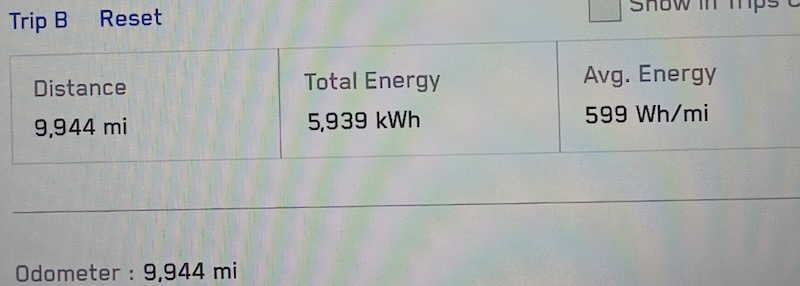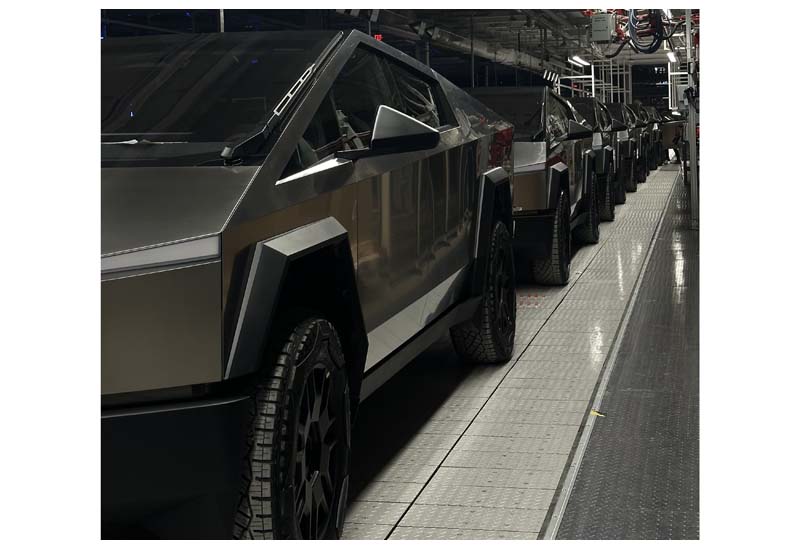How does the highly anticipated Tesla Cybertruck hold up after 10,000+ miles on the odometer? One early Cybertruck owner shared their experiences after putting the electric pickup through its paces. Their candid review provides unique insights into the truck’s real-world performance, highlighting the good, the bad, and the ugly from over 10,000 miles behind the cybernetic wheel.
After taking delivery and driving the first 1,700 break-in miles on all-terrain tires and aero covers, this owner switched to all-season tires while keeping the aero covers. They’ve since racked up over 8,000 additional miles on a mix of highway and city driving with two drivers sharing the truck about 80/20. So what shiny nuggets of wisdom can we glean from their first 10k miles? Let’s download the beta test results!

The owner summarized their experience as “a dream to drive,” touting the Cybertruck’s acceleration, handling, and cabin features like the sound system and cooled seats. However, they felt let down by slower-than-expected charging times, lower than advertised range, and some build quality issues. After 10,000 miles, they think the value is “ok” but see room for improvements as Tesla irons out production kinks.
Beyond generally enjoyable driving dynamics, what did this owner love or hate about daily life with the Cybertruck? Favorites included the audio system’s killer sound quality, the sci-fi steer-by-wire system, and the frunk’s handy storage dividers.
But the ‘hate it’ list includes disappointingly slow charging, excessive road noise, and less real-world range than hoped for – averaging 206 miles at 100% or 164 miles at 80%. The inside vault’s lack of waterproofing also earned a thumbs down, with rainwater intrusion when driving at high speeds.
What About Charging and Range?
Speaking of range, let’s dive into some numbers. Based on different driving styles and conditions, this Cybertruck saw a minimum of 290 Wh/mi in the city up to over 900 Wh/mi on the highway. Driving aggressively but not dangerously over 10,000 miles, they averaged 599 Wh/mi – equating to 206 miles of range at 100% charge or 164 miles at 80%.
The owner charged at home 60% of the time, with lackluster results. A Gen 3 Wall Connector took 8-14 hours to recharge to 90% most days on 32-48 amps. At Superchargers, charging rates proved underwhelming. A V2 Supercharger took up to 2 hours to recharge, while V3 cut that to over 1 hour to reach 70%. Clearly, faster charging options would be welcomed.
What About Insurance, Cargo, and Road Trips?
With a Cybertruck and Model 3 insured for maximum coverage, this driver paid $465 per month. Max observed payload was around 2,000 pounds for an 18 mile trip, averaging 300-400 pounds day to day. One road trip exceeded 1,500 miles.
Any Issues Over 10,000 Miles?
Aside from build quality gripes, this Cybertruck did experience a few hiccups by 10K miles. The main screen went black once, requiring a tow and quick 90-minute fix. A plastic vault piece also fell off but was repaired next day. They did get one flat tire from a stray screw but it was patched.
Key Takeaways – Caution, Tradeoffs Ahead!
What conclusions can future Cybertruck owners draw from this test drive? It seems Cybertrucks do deliver on out-of-this-world acceleration and tech features. But early adopters should temper range expectations and brace for charging times languishing below Tesla’s latest V3 Superchargers due to the Cybertruck’s thirsty specs. Panoramic visibility and a silent drivetrain come at the cost of road noise. And bleeding-edge electronics like the yoke and exterior cameras still have some refinement ahead.
With Tesla still gearing up for mass production, this real-world preview suggests the Cybertruck brings genuine capabilities but also tradeoffs. For buyers patient enough to weather the kinks, it could live up to its billing as the ultimate utility player. But pragmatic truck shoppers may want to hang back for now and see what updates come down the pike after Tesla logs a few more thousand cyber-miles.
